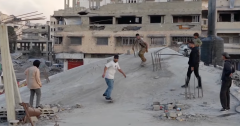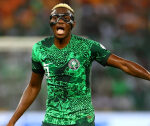A mobile skatepark moving between displacement camps in Gaza is providing rare mental health support to children trapped in one of the world’s most severe humanitarian crises, where trauma and grief are rife.
Amid the wreckage of Gaza City, where collapsed buildings and twisted concrete dominate the landscape, a group of young Palestinians has transformed the destruction into an unlikely playground.
Recommended Stories
list of 3 items
- list 1 of 3How Palestinian artists carry the New Visions spirit of resilience
- list 2 of 3UN peacekeepers say Israeli forces fire on them in southern Lebanon
- list 3 of 3No medical training could prepare me for a ‘life-genocide balance’
end of list
Since the fragile ceasefire began on October 10, skateboard coaches have been running sessions that offer traumatised children brief moments of freedom and normalcy.
“We used to have skateparks in the Gaza Strip; this was our dream here in Gaza,” said Rajab al-Reifi, one of the coaches working with the children. “But unfortunately, after we finally achieved that dream and built skateparks, the war came and destroyed everything.”
The skateboarding initiative operates against a backdrop of continuing Israeli violence despite the ceasefire.
Israeli forces have killed at least 260 Palestinians and wounded 632 others since the truce began on October 10, with attacks occurring on 25 of the past 31 days.

Making do with what’s left
The sessions face severe challenges.
With equipment shortages across Gaza, every skateboard wheel and piece of wood has become precious. Al-Reifi often repairs damaged boards between sessions, knowing replacements are nearly impossible to obtain.
One of the few flat courtyards to survive Israel’s bombardment provides a training ground for beginners, while more adventurous skaters have turned piles of rubble and collapsed walls into makeshift ramps and obstacles.
Rimas Dalloul, another dedicated coach, works to keep the children engaged despite the dire conditions.
“We don’t have enough skateboards for everyone, and there is no protective gear,” she explained. “Their clothes are all they have to help cushion them when they fall. They get injured sometimes, but they always come back. The desire to play is stronger than the pain.”






